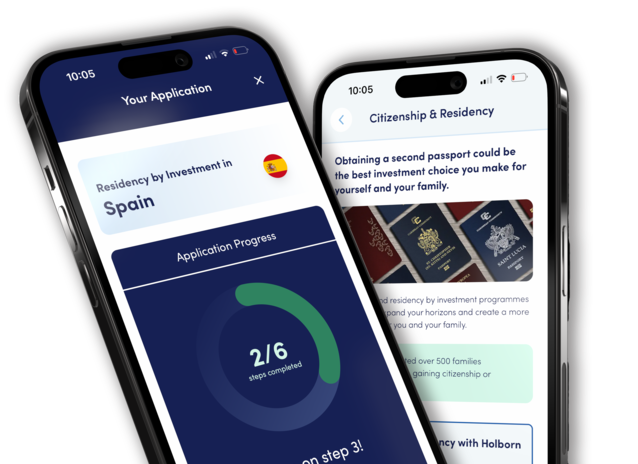What is the difference between EB1, EB2 and EB3
Employment-based (EB) visas allow foreign nationals to secure permanent residency (a Green Card) in the United States.
There are three main types of EB visas: EB-1, EB-2 and EB-3. Each category has different requirements, processes and waiting times.
Understanding the differences between EB-1, EB-2, and EB-3 is crucial for choosing the right path to U.S. permanent residency.
This article is part of our Complete Guide to the EB-3 Visa. In this article, we look at the three main U.S. employment-based visa types and provide insights into each.
Overview of the U.S. Employment-Based Green Cards
Employment-based (EB) Green Cards grant lawful permanent residency in the United States. As a Green Card holder, you can:
- Live and work in the U.S.
- Bring your spouse and unmarried children under 21
- Become eligible for U.S. citizenship after five years
U.S. employment-based visas are split into five preference categories. The main ones are the EB-1, EB-2 and EB-3 visas.
Nearly all employment-based visas require a job offer from a U.S. company. Your employer then acts as your sponsor for your Green Card. The notable exception is the EB-5 visa.
The EB-5 allows investors to self-sponsor, meaning they do not need an offer of employment or sponsorship from a U.S. company.
EB Visas Explained
The most common employment-based visas in the U.S. are the EB-1, EB-2 and EB-3. Each of these EB visa types is further broken down into three subcategories. While each visa type is slightly different, the main difference lies in the eligibility criteria.
What is the EB-1 Visa?
The EB-1 visa is for those who excel in their respective fields and are renowned for their expertise.
Eligibility
- EB-1A: those with extraordinary ability in sciences, arts, education, business or athletics
- EB-1B: outstanding professors and researchers with at least three years of experience
- EB-1C: those employed abroad in a managerial or executive role for at least one of the three years before applying
Application Process Overview
- File Form 1-140 (Immigrant Petition for Alien Workers) and supporting documents
- If you already live in the U.S., file Form I-485 (Adjustment of Status); if you live outside the country, you must go through consular processing
Key Advantages & Disadvantages
✔ No PERM labor certification is required
✔ Faster processing compared to EB-2 and EB-3
✖ Very high eligibility standards
What is the EB-2 Visa?
The EB-2 visa is for professionals with advanced degrees or exceptional ability in their field. Unlike the EB-1, the EB-2 requires a PERM labor certification from the Department of Labor. The only exception is the EB-2C.
Eligibility
- EB-2A: for those with an advanced degree
- EB-2B: individuals with exceptional ability in fields such as the sciences, arts or business
- EB-2C: National Interest Waiver (NIW). A NIW allows applicants to bypass employer sponsorship if their work benefits the U.S.
Application Process Overview
- Your employer files PERM (if required), then submits Form I-140
- As the applicant, you file Form I-485 if you already live in the United States. If you live outside the U.S., you must go through consular processing
Key Advantages & Disadvantages
✔ The EB-2 has a lower eligibility bar than the EB-1
✔ The NIW option allows self-petitioning
✖ The PERM labor certification process can add delays
What is the EB-3 Visa?
The EB-3 visa is for skilled workers, professionals, and other workers. Unlike the EB-1 and EB-2, the EB-3 is far more flexible.
Eligibility
- EB-3A: for skilled workers with at least two years of training or experience
- EB-3B: professionals with a bachelor’s degree or an equivalent foreign degree
- EB-3C: unskilled workers undertaking jobs that require less than two years of training or experience
Related article: understanding the EB-3 visa job categories.
Application Process Overview
- Your employer files PERM and then submits Form I-140
- You must then file Form I-485 if you live in the United States. If you live outside the U.S., you must go through consular processing
Related article: EB-3 process explained.
Key Advantages & Disadvantages
✔ The requirements are less strict than the EB-1 and EB-2
✔ More flexible than the EB-1 and EB-2
✖ Processing can take longer due to backlogs
EB-1, EB-2 or EB-3 — Which is Better?
There is no overall best option when comparing the EB-1, EB-2 and EB-3. It all comes down to which option is right for you.
Below is a general overview of typical candidates for each of the three main U.S. employment-based visas:
- EB-1: professionals and top executives
- EB-2: highly skilled workers with advanced degrees
- EB-3: skilled and unskilled workers
When applying for one of the U.S. employment-based Green Cards, working with a specialist is advised, as applying can be complex. A consultant can help streamline the process and help you avoid any pitfalls.
Related article: how to find an EB-3 consultant.
EB-1 vs EB-2 vs EB-3: A Side-by-Side Comparison
The table below summarises the three main types of EB visas discussed in this article.

Summary
U.S. employment-based (EB) visas are vital in attracting skilled workers, entrepreneurs and investors to the United States. EB visas provide a U.S. Green Card, allowing you to live and work in the country permanently.
Summary of key points:
- The EB-1, EB-2 and EB-3 all lead to a U.S. Green Card (permanent residency)
- The key difference between the EB-1, EB-2 and EB-3 is the eligibility criteria
- The EB-3 visa is more accessible than the EB-1 and EB-2 for most people
To learn more about the various U.S. Green Card options, speak to one of our specialists.
Holborn Pass is a leader in investor visas, supporting a global client base. We provide a bespoke service that has helped investors and their families successfully secure residency in countries worldwide.
Start your journey with Holborn. Speak to one of our experts to learn how we can help you.
